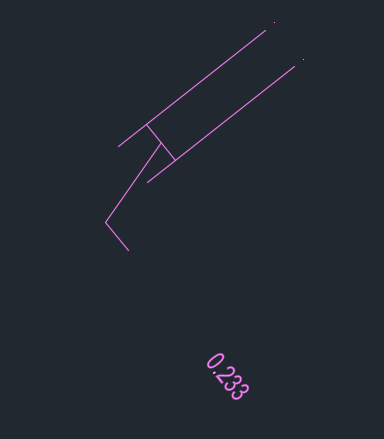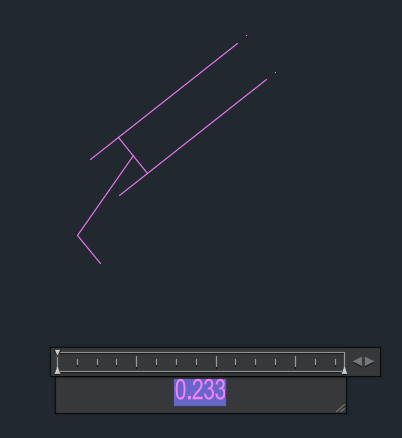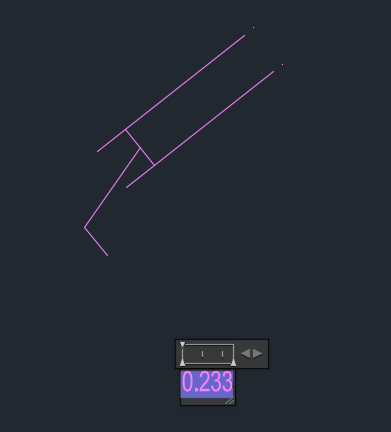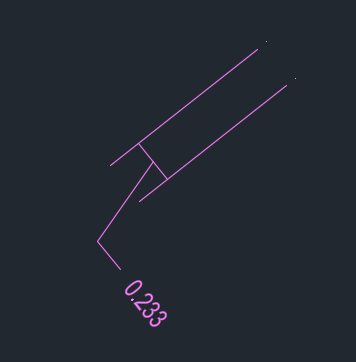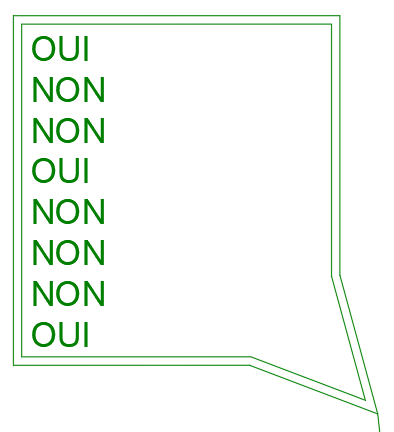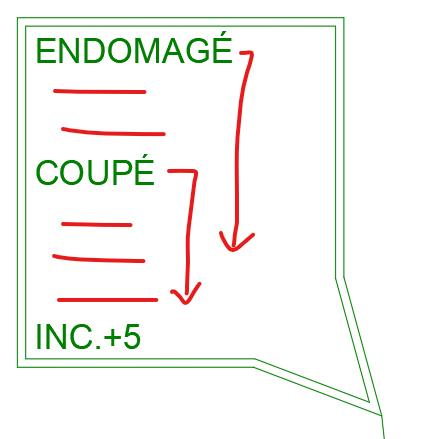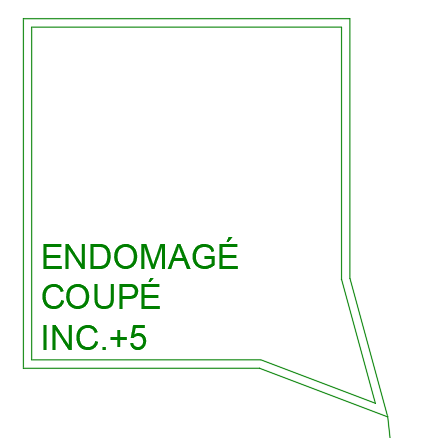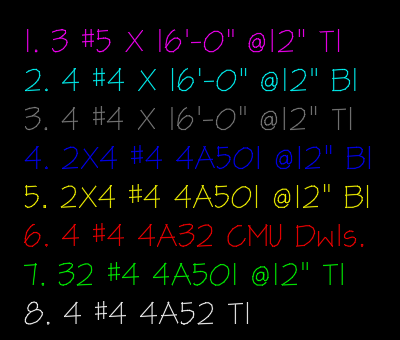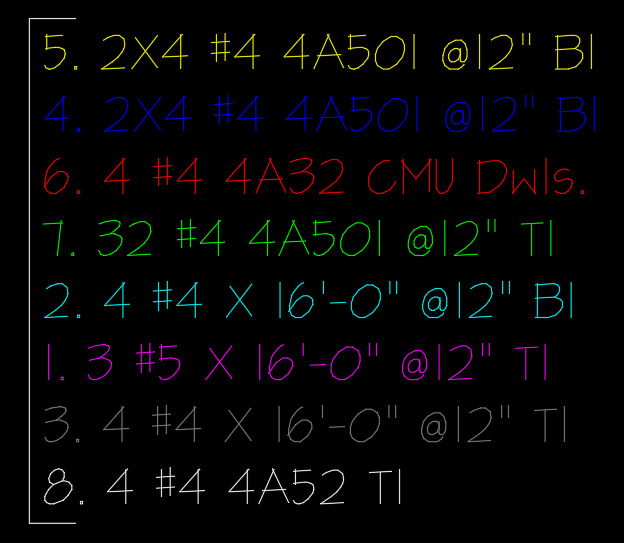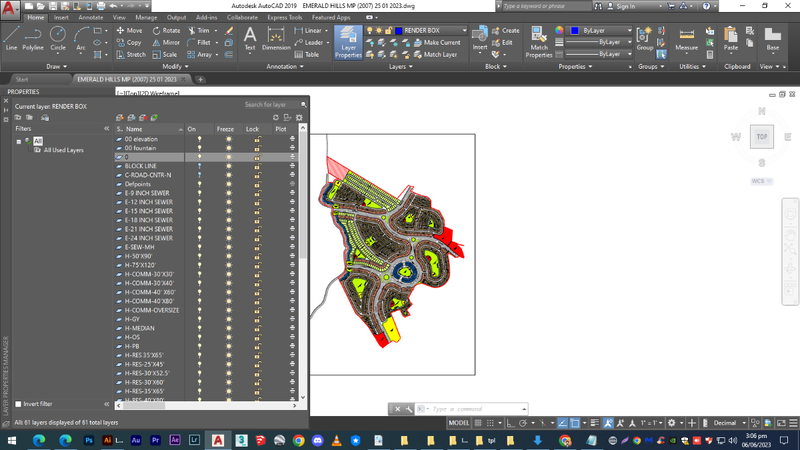Search the Community
Showing results for tags 'lisp'.
-
Hello, I'm here again. I have already created a few independent Lisp programs. I want to add a registration feature using a combination of the computer name, volume serial number, and a secret code. I'm thinking of creating a main Lisp file that all the other Lisp files will depend on. The idea is that if the main file detects that the computer's details don't match the registration code, the entire program won't run. Is it possible to implement this?" Please, can anyone help me?
- 25 replies
-
- registration
- code
-
(and 2 more)
Tagged with:
-
About 2 weeks into my use of AutoLISP. I understand that mapcar evaluates each item seperately, and lamda is used as an undefined function, but: In what situation would you need to use mapcar and lamda? Why would you need an output of a string of values other than presenting the output to the user?
-
What is your opinion on the best way, or any way really, to learn to optimize your code? Or maybe a better way to state that I'm looking for a way to learn how to write cleaner, more streamlined code. Short of posting what I write here and asking for suggestions is there a decent way to learn more efficient coding strategies, or do you just muddle along visit forums like this one and stumble on approaches you can implement and try to apply them to the code you've written? I hardly write code, and I am not a coder but I find it interesting and a love to learn and am excited about using it to make the rest of my work life, and possibly anyone else's who finds it useful, better.
-
Selecting objects within multiple selected closed polylines
Johnnytarno posted a topic in AutoLISP, Visual LISP & DCL
I have scoured the net for a way to select all objects within a selected closed polyline as well objects that are touching the polyline, which i have found, but i need to be able to select more than one closed polyline at a time ,as I work on thousand of circles (drill holes) and shapes at any given time a lot of the time. If someone could please help me it would be greatly greatly appreciated. I am hoping for a modified lisp file that has been out there already. -
Aotomatic cogo point import from csv file
benlconstructors posted a topic in AutoLISP, Visual LISP & DCL
used chatgpt to get me this code but it generates this error "error: Automation Error. Problem in loading application" any ideas? (defun c:MGC ( / filePath fileLine fileHandle parts ptNum north east elev desc fileName newLayerName acadApp doc layMan layObj civApp civDoc pointsObj groupColl newGroup lastPoint centerPt lineCount existingGroup) ;; Step 1: Open file (setq filePath (getfiled "Select CSV File" "" "csv" 0)) (if (not filePath) (progn (alert "No file selected.") (exit) ) ) ;; Step 2: Save file name (setq fileName (vl-filename-base filePath)) ;; Step 3: Create new layer (setq newLayerName (strcat "Points - " fileName)) (setq acadApp (vlax-get-acad-object)) (setq doc (vla-get-ActiveDocument acadApp)) (setq layMan (vla-get-Layers doc)) (if (not (tblsearch "LAYER" newLayerName)) (progn (setq layObj (vla-Add layMan newLayerName)) (vla-put-Color layObj 3) ) ) ;; Step 4: Make new layer active (vla-put-ActiveLayer doc (vla-Item layMan newLayerName)) ;; Step 5: Civil 3D setup + Point Group (setq civApp (vla-getInterfaceObject acadApp "AeccXUiLand.AeccApplication.24")) (setq civDoc (vla-get-ActiveDocument civApp)) (setq groupColl (vla-get-PointGroups civDoc)) ;; Delete existing group with same name if it exists (vlax-for g groupColl (if (= (strcase (vla-get-Name g)) (strcase fileName)) (vla-Delete g) ) ) ;; Create new group (setq newGroup (vla-Add groupColl fileName)) (vla-put-IncludeAllPoints newGroup :vlax-true) ;; Step 6: Read and import points (setq pointsObj (vla-get-Points (vla-get-Points civDoc))) (setq fileHandle (open filePath "r")) (if (not fileHandle) (progn (alert "Unable to open the selected file.") (exit) ) ) (setq lineCount 0) (while (setq fileLine (read-line fileHandle)) (setq parts (vl-string->list fileLine ",")) (if (>= (length parts) 5) (progn (setq ptNum (nth 0 parts)) (setq north (atof (nth 1 parts))) (setq east (atof (nth 2 parts))) (setq elev (atof (nth 3 parts))) (setq desc (nth 4 parts)) (setq lastPoint (vlax-3d-point (list east north elev))) (vla-Add pointsObj lastPoint desc) (setq lineCount (1+ lineCount)) ) ) ) (close fileHandle) ;; Warn if no valid points were imported (if (= lineCount 0) (alert "No valid points were imported. Please check the file format.") ) ;; Step 7: Zoom to last point (if lastPoint (progn (setq centerPt (vlax-get lastPoint 'Coordinates)) (vla-ZoomCenter acadApp (vlax-3d-point (list (car centerPt) (cadr centerPt) 0)) 50.0) ) ) (princ) ) MGC.lsp- 15 replies
-
- lisp
- cogo points
-
(and 2 more)
Tagged with:
-
Hello, I need some help regarding Layouts to DWGs and DWGPROPS. I'm currently using the original layouts to dwg command that Bijucad09 posted. Everything runs good until I open the new drawings, and all of my DWGprop links have been removed. They are replaced with "#'s" Any insight would help. Thank you!
-
Hello, I found a lisp made by third parties and I wanted to adapt it, tried to make the changes myself, but the lisp doesn't work at all. The original lisp (VPGRID.lsp) creates a coordinate grid when selecting the viewport, however the coordinate labels come with the E/N suffix and I want the "X="/"Y=" prefix. (Line 258 and line 318 from original code) I would also like to be able to choose the size of the lines and text (Variables "gr_btick", "gr_ctick" and "gr_txthgt"). I tried to make the changes (QUADRICULA_VP.lsp) without success. Can someone help me. vpgrid.lsp QUADRICULA_VP.lsp
-
Issues with AutoLisp Script for Layer Assignment and MTEXT Selection
cadler posted a topic in AutoLISP, Visual LISP & DCL
Hello everyone, I’ve inherited an AutoLisp file from my predecessor. So far, the file works, though I can’t really judge if it has been optimally written. However, it saves both my colleagues and me a lot of time, and I can adjust most parts of it to my needs. That said, I’m running into issues with a specific section of the code: ;======================================== W A S S E R L A Y E R ======================================== ;*******************TEST Start (command "_-layer" "N" "Bezugslinie-Text" "") ;*******************TEST End ;======================================== L A Y E R Z U W E I S U N G ======================================== ;*******************TEST Start ;BT - Bezugslinie Text (setq BT (ssget "X" '( (0 . "MTEXT") (6 . "Continuous") (370 . 180) ))) (command "_CHANGE" BT "" "EI" "LA" "Bezugslinie-Text" "F" "VonLayer" "LTY" "VonLayer" "LS" "VonLayer" "") ;*******************TEST End The goal is to select MTEXT objects with a line thickness of 0.18 mm and assign them to the appropriate layer. Using the Quick Select tool works fine for this, but the LISP code doesn't seem to behave as expected. Before I share the full LISP file, I wanted to check if my approach makes sense. Is the issue with my plan clear, or have I provided too few details? Thanks in advance for any help! The Full code: (defun c:sweWASSER () ;***** TO-DO***** ;Wasser Bezugslinie der Beschriftung aus Auswahl ausschließen über Linienstärke möglich? ;======================================== V A R I A B L E N ======================================== (setq oldsnap (getvar "osmode")) ;save snap settings (setq oldblipmode (getvar "blipmode")) ;save blipmode setting ;Switch OFF System Variables (setvar "osmode" 0) ;Switch OFF snap (setvar "blipmode" 0) ;Switch OFF Blipmode ;======================================== A U S W A H L ======================================== (setq wasser1 (ssget "X" '((-4 . "<OR") (8 . "Ebene 290") (8 . "W_Anlage") (8 . "W_Anlage_Beschriftung") (8 . "W_Armatur") (8 . "W_Armatur_Beschriftung") (8 . "W_freie_Linie") (8 . "W_freier_Text_Beschriftung") (8 . "W_freies_Symbol") (8 . "W_HA_Abgang") (8 . "W_HA_Leitungsabschnitt_Beschriftung") (8 . "W_HA_Anschluss") (8 . "W_HA_Knoten") (8 . "W_HA_Schieber") (8 . "W_HA_Zähler") (8 . "W_Hydrant") (8 . "W_KKS_Isoliertrennstelle_Messkontakt") (8 . "W_Knoten") (8 . "W_Konstruktionspunkt") (8 . "W_Lagepunkt") (8 . "W_Messwagen") (8 . "W_Messzone") (8 . "W_Rohrkreuzung") (8 . "W_Schemazeichnung") (8 . "W_Schieber") (8 . "W_Schieber_Beschriftung") (8 . "W_Zähler") (8 . "Wasser-Detail") (8 . "Wasser-Rest") (8 . "W_HA_Zähler_Beschriftung") (-4 . "OR>")))) ;======================================== F U N K T I O N S A B L Ä U F E ======================================== (command "-xref" "l" "*" ) ;End Command (command "_-PURGE" "_all" "*" "_n" ) ;End Command (command "ZOOM" "GRENZEN" ) ;End Command (command "_ERASE" wasser1 "" ) ;End Command (command "_-PURGE" "_all" "*" "_n" ) ;End Command (command "REGENALL" ) ;End Command ;======================================== W A S S E R L A Y E R ======================================== ;*******************TEST Anfang (command "_-layer" "N" "Bezugslinie-Text" "") ;*******************TEST ENDE (command "_-layer" "N" "SWE_V_Wasser_VW_SWE" "") (command "_-layer" "N" "SWE_V_Wasser_Text_SWE" "") (command "_-layer" "N" "SWE_V_Wasser_HW_SWE" "") (command "_-layer" "N" "SWE_V_Wasser_AW_SWE" "") (command "_-layer" "N" "SWE_V_Wasser_stillgelegt_SWE" "") (command "_-layer" "N" "SWE_V_Wasser_HA_SWE" "") (command "_-layer" "N" "SWE_V_Wasser_Schutzrohr_SWE" "") (command "_-layer" "N" "SWE_V_Wasser_Bemaßung_SWE" "") (command "_-layer" "SE" "0" "") (command "REGENALL") ;======================================== L A Y E R Z U W E I S U N G ======================================== ;*******************TEST Anfang ;BT - Bezugslinie Text (setq BT (ssget "X" '( (0 . "MTEXT") (6 . "Continuous") (370 . 180) ))) (command "_CHANGE" BT "" "EI" "LA" "Bezugslinie-Text" "F" "VonLayer" "LTY" "VonLayer" "LS" "VonLayer" "") ;*******************TEST ENDE ;VW - Versorgungsleitung (setq VW (ssget "X" '( (6 . "Continuous") (8 . "W_VL_HL_Leitungsabschnitt") ))) (command "_CHANGE" VW "" "EI" "LA" "SWE_V_Wasser_VW_SWE" "F" "VonLayer" "LTY" "VonLayer" "LS" "VonLayer" "") ;WaB - Wasserleitung außer Betrieb (setq WaB (ssget "X" '( (6 . "30") (8 . "Wasser-Stillgelegt") ))) (command "_CHANGE" WaB "" "EI" "LA" "SWE_V_Wasser_stillgelegt_SWE" "F" "253" "LTY" "VonLayer" "LS" "VonLayer" "") ;WaBT - Wasser außer Betrieb Text (setq WaBT (ssget "X" '( (0 . "MText") (8 . "Wasser-Stillgelegt") ))) (command "_CHANGE" WaBT "" "EI" "LA" "SWE_V_Wasser_stillgelegt_SWE" "F" "253" "LTY" "VonLayer" "LS" "VonLayer" "") ;Beschriftung (setq BES (ssget "X" '( (8 . "W_VL_HL_Leitungsabschnitt_Beschriftung") ))) (command "_CHANGE" BES "" "EI" "LA" "SWE_V_Wasser_Text_SWE" "F" "VonLayer" "LTY" "VonLayer" "LS" "VonLayer" "") ;Schutzrohre und Bemaßung sprengen (setq SBS (ssget "X" '((-4 . "<OR")(8 . "W_Schutzrohr")(8 . "Wasser-Bemassung")(-4 . "OR>") ))) (setq a (getvar "qaflags")) (setq b (setvar "qaflags" 1)) (command "_EXPLODE" SBS "") (setvar "qaflags" a) ;Schutzrohr (setq SR (ssget "X" '((-4 . "<OR")(8 . "W_Schutzrohr")(8 . "W_Schutzrohr_Beschriftung")(-4 . "OR>") ))) (command "_CHANGE" SR "" "EI" "LA" "SWE_V_Wasser_Schutzrohr_SWE" "F" "VonLayer" "LS" "VonLayer" "") ;Bemaßung (setq BEM (ssget "X" '( (-4 . "<OR")(8 . "W_freier_Text")(8 . "Wasser-Bemassung")(-4 . "OR>") ))) (command "_CHANGE" BEM "" "EI" "LA" "SWE_V_Wasser_Bemaßung_SWE" "F" "253" "") ;Hausanschlüsse (setq HA (ssget "X" '( (8 . "W_HA_Leitungsabschnitt") ))) (command "_CHANGE" HA "" "EI" "LA" "SWE_V_Wasser_AW_SWE" "F" "VonLayer" "LTY" "VonLayer" "LS" "VonLayer" "") ;Auswahl (setq wasser2 (ssget "X" '((-4 . "<OR")(8 . "Wasser-Stillgelegt")(-4 . "OR>")))) (command "_ERASE" wasser2 "" ) ;End Command (command "_-PURGE" "_all" "*" "_n" ) ;End Command ;Modell Regenerieren (command "REGENALL") ;======================================== T E X T S T I L C H A N G E ======================================== ;; Alle Texte und MText in der Zeichnung auswählen (setq ss (ssget "X" '((0 . "TEXT,MText")))) ;; Wenn Texte vorhanden sind, den Stil ändern (if ss (progn (setq i 0) (while (< i (sslength ss)) (setq e (entget (ssname ss i))) ; Entität der Auswahl bekommen (setq eneu (subst (cons 7 "STANDARD") (assoc 7 e) e)) ; Stil auf "STANDARD" ändern (entmod eneu) ; Entität mit dem neuen Stil aktualisieren (setq i (1+ i)) ) (princ "\nAlle Texte auf den Stil 'STANDARD' gesetzt.") ) (princ "\nKeine Texte in der Zeichnung gefunden.") ) ;======================================== R E S E T V A R I A B L E ======================================== (setvar "osmode" oldsnap) ;Reset snap (setvar "blipmode" oldblipmode) ;Reset blipmode (princ) ;finish cleanly ) ;Ende defun (princ) ;load cleanly -
Need help reducing multiple oversized dimension text boxes at once
0misclose posted a topic in AutoCAD 2D Drafting, Object Properties & Interface
I have a drawing with multiple rotated dimensions and some are quite small resulting in text being offset to the leader. I was wondering if there is an easy way to change all the text box components of the dimensions to fit the actual size of the text so that it isn't so offset from the leader without exploding all the dimensions. I've included some snap shots below for reference. There are quite a few in the file so I want to try and avoid having to do them manually one by one. Any help would be greatly appreciated. Regards, Ryan -
Hi every one, good day to all, I have a very interesting concept to do in autocad with lisp. To automate the creation of multiple concrete profiles based on existing profile points (lines, polylines, curves, or ellipses) and extend these profiles further using predefined data (e.g., in an Excel or CSV file). This process will reduce manual effort and save significant time. My series of operation to achieve this by using the excel/.csv file, Steps are, 1. Get the existing profiles point locations (End points of polylines, line. Radius of curve, ellipse) for example 5 profiles, by that we can get changes as series. Step 1: Extract Existing Profile Points - Identify key points (endpoints of polylines or lines, radius points of curves, center points of ellipses, etc.) from the existing profiles in AutoCAD. These points are the foundation for generating the additional profiles. Export these point data (coordinates: X, Y, Z if needed) into a CSV file or Excel sheet for further processing. Step 2: Generate New Profile Data in Excel - Use the exported data from Step 1 to calculate or define new profiles. For example, if there are 5 existing profiles, Excel can create the data for 50 or more additional profiles using with how the series. Each new profile will have its unique point locations defined as individual profiles. Step 3: Automate Profile Creation in AutoCAD - covert those as lines, curves with LISP routine to: Read the new profile data from the CSV/Excel file. Iterate through the data to create polylines, lines, arcs, or other entities that represent the new profiles. Ensure the new profiles are drawn incrementally (e.g., Profile 1, Profile 2, and so on) and are clearly labeled or grouped. I think it bit complicated, Thanks in advance every one I have attached the example dwg file. Profile Example.dwg
-
Batch plot to pdf for DWG and layouts with different path and name
harimaddddy posted a topic in AutoLISP, Visual LISP & DCL
Hi everyone , I want to automate the process of converting multiple DWG files into PDFs, where each layout is saved as a separate PDF with a unique name and stored in specific directories. For example, if one DWG file has three layouts, those three layouts should be saved as three separate PDFs in one folder, and another DWG file's layouts should go to a different folder. Right now, Im doing this manually using the Plot command, but it’s repetitive and time-consuming. Although I tried using the Sheet Set Manager, it results in darker PDFs compared to those created through the regular plotting method. Im looking for a way to automate this while keeping the quality of the plotted PDFs intact and i search for lisp and i can't find it. Thanks in advance for everyone... -
Dear, sir, Any trick,code, VBA, Excel for publish pdf and etransmit also. I have many cad drawings, every drawing have a folder I want to make pdf & etransmit at time ( if in 2 step pdf first and etransmit second no issue) but at same path . But Without opening the drawings. ---_-----------------+++++---- Publish PDF and etransmit at same location of drawing For publish everything is already set, page set-up, ctb etc. Thanks
-
Dear sir, I need a program for to draw hatching as per condition, multiple selection at time. If separate, separate lisp no issue, if add option for 2 line and 3line Cad file attached with situation and require solution. Thanks HATCHING PATTERN AS PER CONDITION.dwg
-
The current routine works but requires 2 major changes (1) and (2). So... basically what I would like to accomplish would be: 1) find a way so that the filtering process accounts for a specific block throughout the drawing instead of :L , but no success on this regard: (if (setq s (ssget "_X" '((0 . "INSERT") (66 . 1) (2 . "`*U*,POTEAUX_PLAN_BLK1")))) (repeat (setq i (sslength s)) (setq o (vlax-ename->vla-object (setq ent (ssname s (setq i (1- i)))))) (if (and (vlax-property-available-p o 'effectivename) (= "poteaux_plan_blk1" (strcase (vla-get-effectivename o) t)) ) (progn ... It works as is, but cannot find a way to incorporate (2 . "`*U*,POTEAUX_PLAN_BLK1") for the dynamic block "POTEAUX_PLAN_BLK1". So I ended up selecting the blocks one by one as an alternative. 2) The attributes on the block are arranged in the same manner as displayed on the tags list. Is it possible to move tags downward by say 2.5 units to re-arrange the position after tags are removed (Photo before & after)? (defun c:foo (/ s tags) ;; List of tags to target (setq tags '( "ENDOMAGÉ" "FISSURÉ" "BANDEJAUNE" "COUPÉ" "TRANSFERT" "<1M" "<3M" "INC.+5" ) ) ;; Select attributed blocks (if (setq s (ssget ":L" '((0 . "INSERT") (66 . 1)))) (foreach e (vl-remove-if 'listp (mapcar 'cadr (ssnamex s))) ; Loop through selected entities (foreach tag tags (if (vl-catch-all-error-p (vl-catch-all-apply (function (lambda () ;; Get the current value of the attribute (cond ;; Case 1: Empty or "NON" -> Set value to "" ((or (eq "" (getpropertyvalue e tag)) (eq "NON" (strcase (getpropertyvalue e tag)))) (setpropertyvalue e tag "")) ;; Case 2: "OUI" -> Set value to the tag name ((eq "OUI" (strcase (getpropertyvalue e tag))) (setpropertyvalue e tag tag)) ) ) ) ) ) (princ (strcat "\nError handling tag: " tag)) ; Error Handling );end if ) ) ); end if (princ) ); end defun Any help is appropriated! Before... After... my wish...
-
Replacing an extrusion profile with another profile
Dan Kitchens posted a topic in AutoCAD 3D Modelling & Rendering
A while back AutoCAD introduced semi-parametric extrusions, you could alter the polyline and the extrusion would update. It's a great feature, but has anyone heard of a way of replacing the polyline profile with a different one? This would be very handy for cabinetmakers who use a variety of profiles to their doors. It's a shame 2D blocks can't be extruded as blocks can be replaced...- 14 replies
-
- lisp
- 3d modelling
-
(and 3 more)
Tagged with:
-
I got this code from chatgpt, that chatgpt got from a defunct post from autocad website forums. Whenever I tried going to the website or googling, the link seems broken so I don't know how this code exactly works. I am trying to make a Lisp that creates dimstyles from scratch. everything is working except for changing between annotative and non annotative. The code below does a good job of setting the created dimension style to annotative. But when I ask chat gpt to make it in reverse, i.e. make a code that makes the created dimstyle non annotative, it can't. (defun set-dimstyle-annotative (dimstyle-name / ent entdata xdata) ;; Ensure the dimension style exists (if (and (setq ent (tblobjname "dimstyle" dimstyle-name)) (setq entdata (entget ent))) (progn ;; Check if XData for "AcadAnnotative" exists (if (not (assoc -3 entdata)) (progn ;; Add XData to set the dimension style as annotative (setq xdata '((-3 ("AcadAnnotative" (1000 . "AnnotativeData") (1002 . "{") (1070 . 1) ; Version number (1070 . 1) ; Annotative flag: 1 = Yes, 0 = No (1002 . "}") ) ) ) ) ;; Apply the XData to the dimension style (entmod (append entdata xdata)) (princ (strcat "\nDimension style '" dimstyle-name "' set to annotative.")) ) (princ (strcat "\nDimension style '" dimstyle-name "' is already annotative.")) ) ) (princ (strcat "\nDimension style '" dimstyle-name "' not found.")) ) (princ) ) Basically when a dimstyle is created, I put this at the end of the code to make it annotative. However, after making an annotative dimstyle, I can make a dimstyle, but because the previous was annotative, I cannot set the new dimstyle to non annotative. Chat gpt gave me a code but it seems it just butchered the code and it doesn't work. I attached the lisp file. Thanks!! DimStyles.lsp
- 2 replies
-
- annotative dimension
- autolisp
-
(and 1 more)
Tagged with:
-
I would like some help to create a function that would allow me to select a point in between two horizontal and/or vertical lines and it would give me the vertical and horizontal dimensions between those lines. It's a 2D drawing but some lines are of different z value. I have tried using chatgpt to create a code but it is not able to properly select the nearest line from my specified point (after running the command). This function is there in the new sketchup. I was hoping to use it to create internal dimensions in an architectural plan.
-
Create field from attribute in block and put it directly into dimension.
fromMlm posted a topic in AutoLISP, Visual LISP & DCL
Hi all, Again I have found a lisp Lee Mac made that copies a field into a dimension, "copyfield", but it requires that the field already exists... So is there a way to create a field from an attribute in a block and then insert the field directly into a dimension? Thanks in advance. -
"I'm interested in using Lisp for a project involving rope simulations. Can you recommend a Lisp implementation capable of rendering rope-like curves with realistic physics-based deformations?" bandicam 2024-11-21 13-23-17-231.mp4
-
Hi my friends , Happy day.... I'm trying to solve an issue to help my non-coder friends. I'm using a Lisp file that contains all my routines, but I can't explain everything every time. So, I want to create a table inside AutoCAD that lists the shortcut commands and their descriptions, similar to how the TEXT COUNTER command works by Lee Mac. Any other suggestions could help me a lot. Thanks in advance my friends.... Attached is my lisp file Lisp Routine.lsp
-
Hi friends Source:https://www.cadtutor.net/forum/topic/68426-create-automatic-level-in-metric/ (Defun c:BT() (Setq sst(ssget) sset(ssget "p" '((0 . "text"))) tv (cdr(Assoc 1 (Entget(ssname sset 0))))) (command "move" sst "" "@" "@") (setq lset (ssget "p" '((0 . "line")))) (Setq st 1) (while (= 0.0 (ATOF (substr tv st 1))) (Setq st (+ 1 st))) (Setq et 1) (while (/= "\"" (substr tv et 1)) (Setq et (+ 1 et))) (setq str(distof (substr tv st (- et st)))) (command "copy" sset "" (setq a (getpoint "\n Specify the source point: ")) (Setq b(getpoint "\n Specify the Desitnation point: " a))) (if (< (- (cadr a )(cadr b)) 0) (command "change" (entlast) "" "" "" "" "" "" (strcat "EL. "(rtos (+ str (- (cadr B )(cadr A)))4 2)"")) (command "change" (entlast) "" "" "" "" "" "" (strcat "EL. "(rtos (+ str (- (cadr B )(cadr A)))4 2)""))) (command "Copy" lset "" a b) ) I use a command in CAD to mark elevations, and it works well with positive elevation values in imperial units. For example, if I move a marker like 'EL. 1'-0"' up by 2', it correctly updates to 'EL. 3'-0".' However, it doesn't handle negative values as expected. If I move 'EL. -1'-0"' by 2', it changes to EL. -3'-0"' instead of the correct EL. 1'-0". Another example is if I move EL. -5'-0" up by 2', it should update to 'EL. -3'-0",' but instead, it incorrectly changes to EL. -7'-0". Thanks in advance for your help.
-
;crank value based on bar dia only (defun c:Z1 ( / s p a q r below-dia above-dia z cushion k-multiplier) ;; Define bar diameters within the command (setq diameters '((3 . 0.375) (4 . 0.5) (5 . 0.625) (6 . 0.75) (7 . 0.875) (8 . 1.0) (9 . 1.270) (10 . 1.310))) ;; Helper function to get diameter value based on input key (defun get-diameter-value (key) (cdr (assoc key diameters))) ;; Define default values if not previously set (if (not (boundp 'crank:prev-below)) (setq crank:prev-below 8)) (if (not (boundp 'crank:prev-above)) (setq crank:prev-above 4)) (if (not (boundp 'crank:prev-z)) (setq crank:prev-z 0)) ; Length of extension (if (not (boundp 'crank:prev-multiplier)) (setq crank:prev-multiplier 6)) ; Default K multiplier ;; 1. Set the K multiplier (setq k-multiplier (getint (strcat "\nEnter Crank Ratio <" (rtos crank:prev-multiplier 2 0) ">: ")) k-multiplier (if k-multiplier k-multiplier crank:prev-multiplier)) ;; Store the multiplier for future use (setq crank:prev-multiplier k-multiplier) ;; 2. Prompt for below and above level bar numbers (3-10) with previous values as defaults (setq below-dia (getint (strcat "\nSpecify below level bar number (3-10) <" (itoa crank:prev-below) ">: ")) below-dia (if below-dia below-dia crank:prev-below)) (setq above-dia (getint (strcat "\nSpecify above level bar number (3-10) <" (itoa crank:prev-above) ">: ")) above-dia (if above-dia above-dia crank:prev-above)) ;; Display warning if any of the bar diameters is below 5 (if (or (< below-dia 5) (< above-dia 5)) (progn (princ "\nWarning: #5 vert. is minimum for Column.") (princ "\nPlease consult your TL (Team Leader) if bar dia is below 5."))) ;; Store the current values as previous values (setq crank:prev-below below-dia crank:prev-above above-dia) ;; 3. Calculate H and K with cushion value and the user-defined multiplier for K (setq cushion 0.25) (setq crank:prev-y (+ (get-diameter-value below-dia) (get-diameter-value above-dia) cushion)) ; H Distance (setq crank:prev-x (* crank:prev-y k-multiplier)) ; K Distance using multiplier ;; Display current H and K values (print (strcat "*** Calculated H Distance is " (rtos crank:prev-y 2 2) "***")) (print (strcat "*** Calculated K Distance is " (rtos crank:prev-x 2 2) "***")) ;; 4. Get length of extension (setq z (if (= nil (setq z (getreal (strcat "\nSpecify length of extension <" (rtos crank:prev-z 2 2) ">: ")))) crank:prev-z z)) ;; Store the extension value for next time (setq crank:prev-z z) ;; Prompt user for line selection and calculate points (if (and (setq s (entsel "\nSelect line close to end: ")) (setq p (osnap (cadr s) "end")) (setq a (angle (osnap (cadr s) "nea") p)) (setq q (polar (polar p a crank:prev-x) (+ a (/ pi 2)) crank:prev-y)) (setq r (polar q a z))) ;; Create polyline (progn (command "_.pline" "_non" p "_non" q "_non" r "") ;; Join the original line with the new polyline (initcommandversion) (command "_.join" (car s) "_l" ""))) ;; Exit gracefully (princ) ) ;Crank with user given value (defun c:Z2 ( / s p a y x z q r) ;; Define global variables to store previous values (if (not (boundp 'crank:prev-y)) (setq crank:prev-y 0)) (if (not (boundp 'crank:prev-x)) (setq crank:prev-x 0)) (if (not (boundp 'crank:prev-z)) (setq crank:prev-z 0)) ;; Display current values (print (strcat "*** Current H Distance is " (rtos crank:prev-y 4 2) "***")) (print (strcat "*** Current k Distance is " (rtos crank:prev-x 4 2) "***")) (print (strcat "*** Current Length of Extension is " (rtos crank:prev-z 4 2) "***")) ;; Prompt user for line selection (if (and (setq s (entsel "\nSelect line close to end: ")) (setq p (osnap (cadr s) "end")) (setq a (angle (osnap (cadr s) "nea") p)) ;; Get perpendicular distance ;; Use previous value if Enter is pressed (setq y (if (= nil (setq y (getreal (strcat "\nSpecify H distance <" (rtos crank:prev-y 2 2) ">: ")))) crank:prev-y y)) ;; Get tangent distance ;; Use previous value if Enter is pressed (setq x (if (= nil (setq x (getreal (strcat "\nSpecify K distance <" (rtos crank:prev-x 2 2) ">: ")))) crank:prev-x x)) ;; Get length of extension ;; Use previous value if Enter is pressed (setq z (if (= nil (setq z (getreal (strcat "\nSpecify length of extension <" (rtos crank:prev-z 2 2) ">: ")))) crank:prev-z z)) ;; Calculate points (setq q (polar (polar p a x) (+ a (/ pi 2)) y)) (setq r (polar q a z))) ;; Store entered values for next time (progn ;; Only update stored values if new values were provided ;; This ensures we keep the last used values if Enter was pressed. (if (/= y crank:prev-y) (setq crank:prev-y y)) (if (/= x crank:prev-x) (setq crank:prev-x x)) (if (/= z crank:prev-z) (setq crank:prev-z z)) ;; Create polyline (command "_.pline" "_non" p "_non" q "_non" r "") ;; Join the original line with the new polyline (initcommandversion) (command "_.join" (car s) "_l" ""))) ;; Exit gracefully (princ) ) ;bar dia with offset (defun c:Z3 ( / diameters below-dia above-dia h k z offset multiplier cushion p a q r s) ;; Define the bar diameters within the command (setq diameters '((3 . 0.375) (4 . 0.5) (5 . 0.625) (6 . 0.75) (7 . 0.875) (8 . 1.0) (9 . 1.27) (10 . 1.31))) ;; Retrieve previous values or set defaults (if (not (boundp 'crank:prev-multiplier)) (setq crank:prev-multiplier 6)) (if (not (boundp 'crank:prev-below)) (setq crank:prev-below 8)) (if (not (boundp 'crank:prev-above)) (setq crank:prev-above 4)) (if (not (boundp 'crank:prev-offset)) (setq crank:prev-offset 0.0)) (if (not (boundp 'crank:prev-z)) (setq crank:prev-z 36.0)) ;; 1. Prompt for multiplier for K, with previous as default (setq multiplier (getreal (strcat "\nSpecify Crank Ratio <" (rtos crank:prev-multiplier 2 2) ">: ")) multiplier (if multiplier multiplier crank:prev-multiplier)) ;; Store multiplier for future use (setq crank:prev-multiplier multiplier) ;; 2. Prompt for below bar diameter with default (setq below-dia (getint (strcat "\nSpecify below level bar number (3-10) <" (itoa crank:prev-below) ">: ")) below-dia (if below-dia below-dia crank:prev-below)) ;; 3. Prompt for above bar diameter with default (setq above-dia (getint (strcat "\nSpecify above level bar number (3-10) <" (itoa crank:prev-above) ">: ")) above-dia (if above-dia above-dia crank:prev-above)) ;; Display warning if any of the bar diameters is below 5 (if (or (< below-dia 5) (< above-dia 5)) (progn (princ "\nWarning: #5 vert. is minimum for Column.") (princ "\nPlease consult your TL (Team Leader) if bar dia is below 5."))) ;; Store current bar values for next use (setq crank:prev-below below-dia) (setq crank:prev-above above-dia) ;; 4. Get offset value with default (setq offset (getreal (strcat "\nSpecify additional offset for H distance <" (rtos crank:prev-offset 2 2) ">: ")) offset (if offset offset crank:prev-offset)) ;; Store offset for future use (setq crank:prev-offset offset) ;; 5. Get length of extension with default (setq z (getreal (strcat "\nSpecify length of extension <" (rtos crank:prev-z 2 2) ">: ")) z (if z z crank:prev-z)) ;; Store length of extension for next use (setq crank:prev-z z) ;; Calculate H and K values (setq cushion 0.25) (setq h (+ (cdr (assoc below-dia diameters)) (cdr (assoc above-dia diameters)) cushion offset)) (setq k (* h multiplier)) ;; Display calculated H and K values (print (strcat "*** Calculated H Distance is " (rtos h 2 2) "***")) (print (strcat "*** Calculated K Distance is " (rtos k 2 2) "***")) ;; Prompt user for line selection and calculate points (setq s (entsel "\nSelect line close to end: ")) (if (and s (setq p (osnap (cadr s) "end")) (setq a (angle (osnap (cadr s) "nea") p))) (progn ;; Calculate the next two points (setq q (polar (polar p a k) (+ a (/ pi 2)) h)) (setq r (polar q a z)) ;; Create polyline (command "_.pline" "_non" p "_non" q "_non" r "") ;; Join the original line with the new polyline (initcommandversion) (command "_.join" (car s) "_l" "") ) (princ "\nError: No valid line selected.") ) ;; Exit gracefully (princ) ) ;Crank based on Client H and K values (defun c:Z4 ( / s p a q r bar-dia z h-value k-value) ;; Define pre-defined H and K values for each bar diameter (setq diameters '((3 . (0.375 . 2)) (4 . (0.5 . 2.5)) (5 . (0.625 . 3)) (6 . (0.75 . 3.5)) (7 . (0.875 . 4)) (8 . (1.0 . 4.5)) (9 . (1.270 . 5)) (10 . (1.310 . 5.5)))) ;; Helper function to get H and K values based on bar diameter (defun get-h-k-values (key) (cdr (assoc key diameters))) ;; Define default values if not previously set (if (not (boundp 'crank:prev-bar-dia)) (setq crank:prev-bar-dia 8)) ; Default bar diameter ;; Prompt for bar diameter (3-10) with the previous value as the default (setq bar-dia (getint (strcat "\nSpecify bar diameter (3-10) <" (itoa crank:prev-bar-dia) ">: ")) bar-dia (if bar-dia bar-dia crank:prev-bar-dia)) ;; Store the bar diameter for future use (setq crank:prev-bar-dia bar-dia) ;; Get H and K values based on the selected bar diameter (setq h-value (car (get-h-k-values bar-dia))) ; H value for the selected diameter (setq k-value (cdr (get-h-k-values bar-dia))) ; K value for the selected diameter ;; Display the calculated H and K values (print (strcat "*** Calculated H Distance for bar diameter " (itoa bar-dia) " is " (rtos h-value 2 2) "***")) (print (strcat "*** Calculated K Distance for bar diameter " (itoa bar-dia) " is " (rtos k-value 2 2) "***")) ;; Get length of extension (setq z (if (= nil (setq z (getreal (strcat "\nSpecify length of extension <" (rtos crank:prev-z 2 2) ">: ")))) crank:prev-z z)) ;; Store the extension value for future use (setq crank:prev-z z) ;; Prompt user for line selection and calculate points (if (and (setq s (entsel "\nSelect line close to end: ")) (setq p (osnap (cadr s) "end")) (setq a (angle (osnap (cadr s) "nea") p)) (setq q (polar (polar p a k-value) (+ a (/ pi 2)) h-value)) (setq r (polar q a z))) ;; Create polyline (progn (command "_.pline" "_non" p "_non" q "_non" r "") ;; Join the original line with the new polyline (initcommandversion) (command "_.join" (car s) "_l" ""))) ;; Exit gracefully (princ) ) Hi every friends Base code Source: https://forums.autodesk.com/t5/visual-lisp-autolisp-and-general/req-polyline-crank/td-p/11808942 I could really use some help or suggestions. I'm currently using multiple commands to draw a crank bar, but I’d like to combine all those commands into one single command. I’ve seen how Lee Mac does it with his ATC command, and I’m hoping to achieve something similar. If you have any ideas on how I can do this, please share! Also, if you have suggestions for alternatives other than just combining all the commands, I’d love to hear those too. Thanks in advance to all.
-
Hello everyone. This is my first time posting but i have enjoyed a lot of your great work. I use a lot a field about object/polyline/length - decimal 0 (copy it to different polylines and than get their lenghth) and i am tired of changing object from dialogbox. Is there an easy way (lisp or other) to change the object directly and get its length:):)
-
Text entities process with green selection window
harimaddddy posted a topic in AutoLISP, Visual LISP & DCL
Hi all, I need some help from pros, but my English is not good . I'm use this 1 command to align the text with custom insertion point and evenly distributed, the issues are listed below, 1. When I select the text entities with green window (snap-1) it reorder all text entities by itself (snap-2), I might select a group of texts labeled 5 to 7 first, then select another group from 1 to 4, and finally include text labeled 8. However, when I look at the selection afterward, the order is not what I expected (snap-2); it seems to rearrange itself instead of keeping the sequence I selected them in. Snap:1 Snap-2 2.If i use undo it affect the osmode , so that i use a error handler. Thanks in advance.... (defun c:1() (command "ucs" "world") (setq objs (ssget '((0 . "TEXT")))) (Setq scalef (/ (cdr(assoc 40(entget(ssname objs 0))))9)) (setq x_x (* scalef 4.0)) (setq y_y (* scalef 4.0)) (setq text_gap (* scalef 16.0)) (setq text_height (* scalef 9.0)) (setq ss_len (sslength objs)) (setq osm (getvar "osmode")) (command "osnap" "end") (setq cxy (getpoint "pick a point")) (command "osmode" 0) (setq cx (car cxy)) (setq cy (car (cdr cxy))) (setq count 0) (setvar "osmode" 16383) (repeat ss_len (if (= count 0) (progn (setq tx1 (+ cx x_x)) (setq ty1 (+ cy (/ (+ (* (- ss_len 1.0) text_gap) text_height) 2 ) ) ) (setq tx2 tx1) (setq ty2 (- ty1 text_height)) ) (setq ty2 (- ty2 text_gap)) ) (setvar "osmode" 16383) (setq obj (ssname objs count)) (setq objp (entget obj)) (setq objj_new (cons 72 0)) (setq objc_11 (cons 11 (list 0 0 0))) (setq objc_10 (cons 10 (list tx2 ty2 0))) (setq objp (subst objc_10 (assoc 10 objp) objp)) (setq objp (subst objc_11 (assoc 11 objp) objp)) (setq objp (subst objj_new (assoc 72 objp) objp)) (entmod objp) (setq count (+ count 1)) ) (setvar "osmode" 16383) (setq lpx1 (+ cx (* 12.0 SCALEF))) (setq lpx2 cx) (setq lpx3 cx) (setq lpx4 lpx1) (setq lpy1 (+ ty1 x_x)) (setq lpy2 lpy1) (setq lpy3 (- ty1 (+ (+ (* text_gap (- count 1)) text_height) (* scalef 5.0)) ) ) (setq lpy4 lpy3) (setq lp1 (list lpx1 lpy1)) (setq lp2 (list lpx2 lpy2)) (setq lp3 (list lpx3 lpy3)) (setq lp4 (list lpx4 lpy4)) (setq clay (getvar "clayer")) (setvar "clayer" "0-25text") (if(> ss_len 1) (progn (command "pline" lp1 lp2 lp3 lp4 "") ) ) (setvar "osmode" 16383) (setvar "clayer" clay) ) -

Is There Any Way To Export All Layers Separately Into Pdf Format?
Shahtaj Bhutto posted a topic in Tutorials & Tips'n'Tricks
Hi Is there any way to export all layers separately into pdf format? i want to export all of them at once to edit them in illustrator. It's taking alot of time to export them one by one from autocad I don't have any professional Experience with programming but i have tried to made this .lisp with chatGPT but it's not working to export files which property in codes needs improvements please (defun c:ExportLayersToPDF (\Users\Useer\Desktop\pdf layers) (setq dwgname "EMERALD HILLS MP (2007) 25 01 2023") ; (setq dwgpath "F:\Shahtaj Ahmed Bhutto\AUTOCAD") ; (setq layname "") (while (setq layname (tblnext "LAYER" layname)) (and layname (/= layname "0") (/= layname "DEFPOINTS") (/= (logand (cdr (assoc 70 (tblsearch "LAYER" layname))) 1) 1) (progn (setq pdfname (strcat dwgname "_" layname ".PDF")) (setq pdffullpath (strcat dwgpath pdfname)) (command "-plot" "Yes" "Model" "" "" "DWG To PDF.pc3" "A0" "PORTRAIT" "Inches" "Fit" "Center" "No" "No" "No" "Yes" "No" "No" "Yes" "Yes" pdffullpath) T ) ) ) (princ) )- 10 replies

.thumb.png.c35fecdba3703df8558860266c108a77.png)
